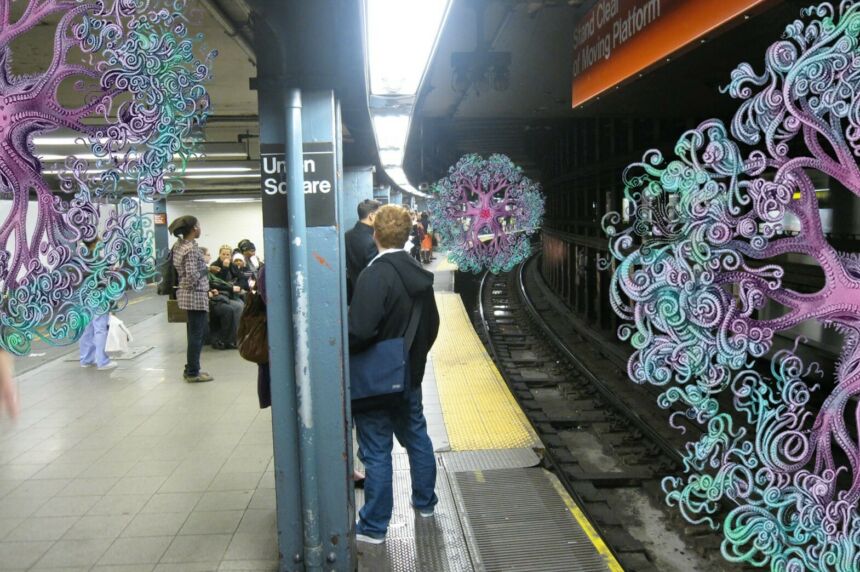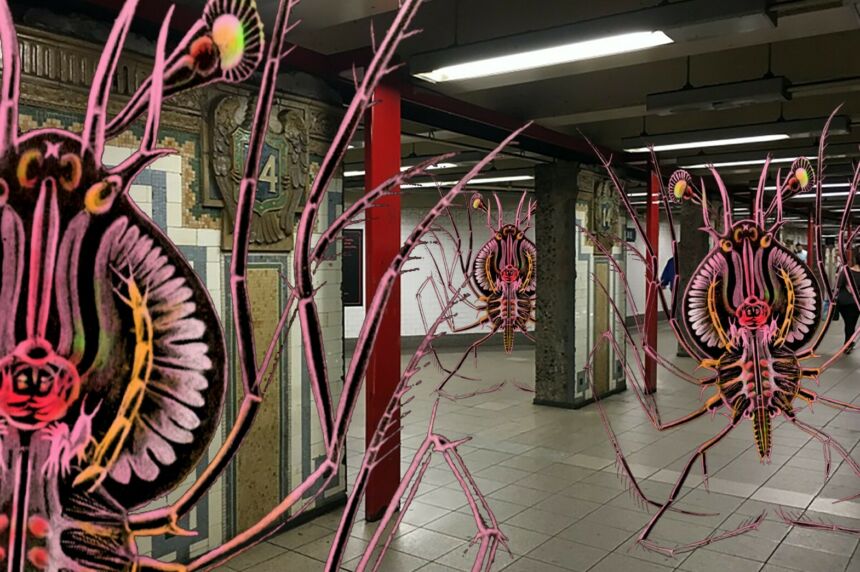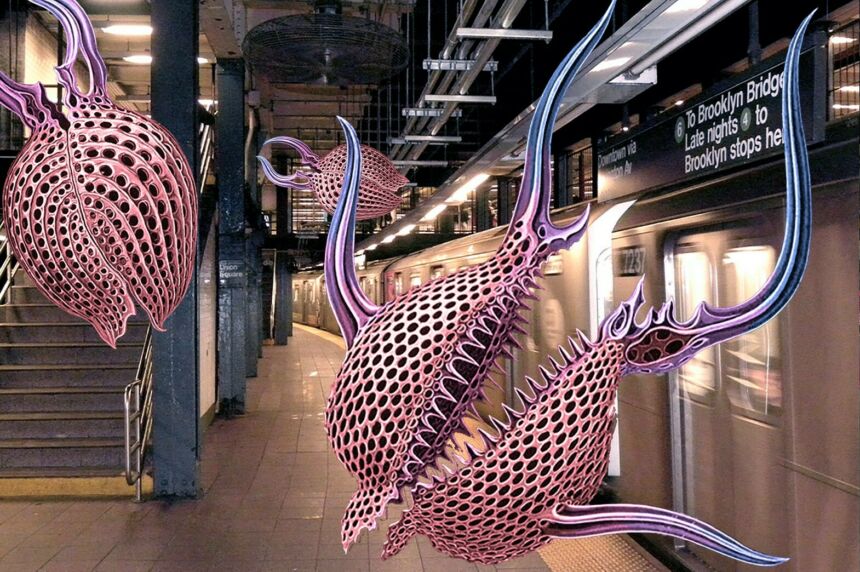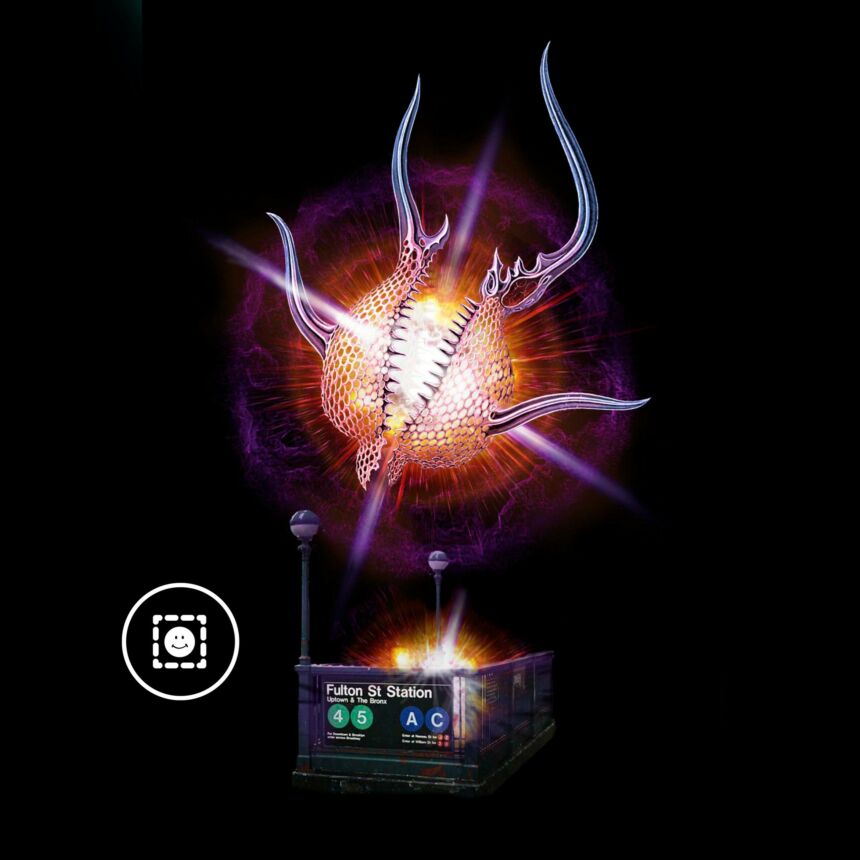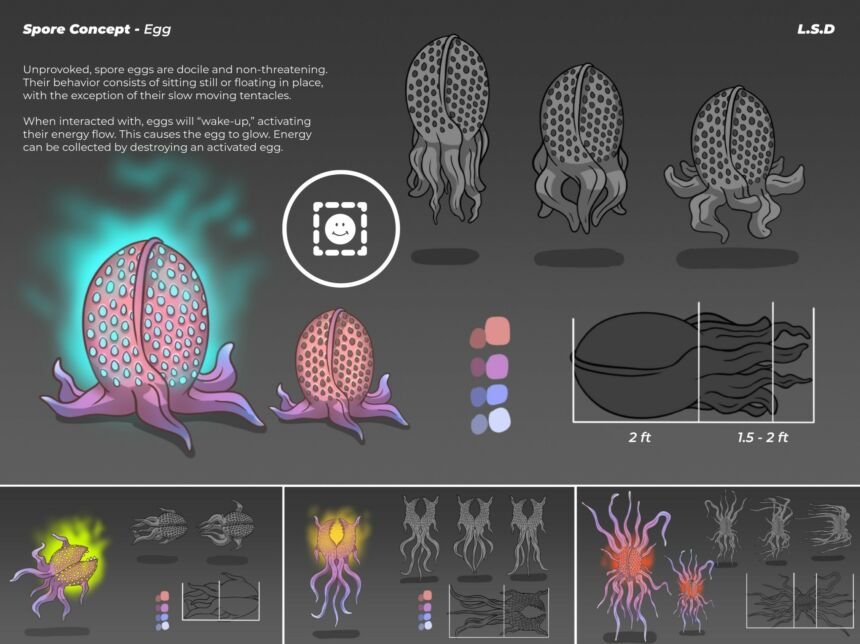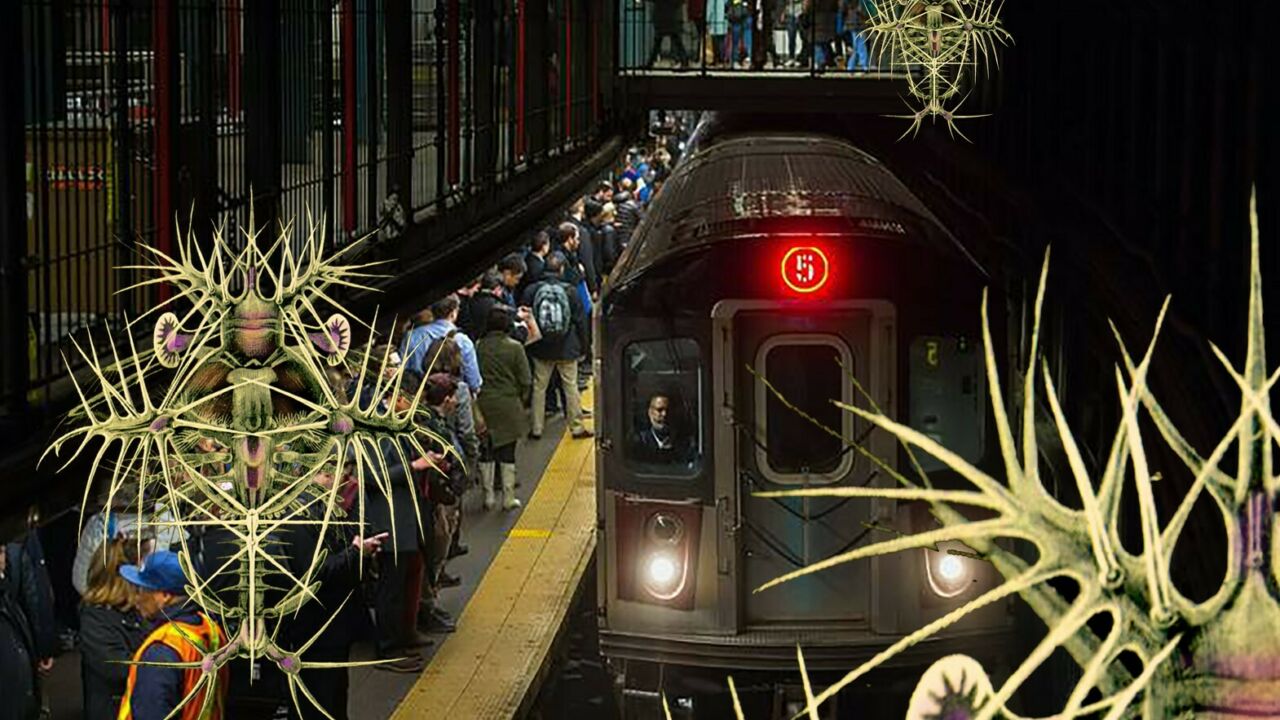
Graphic design professor Rodney Allen Trice has several visual communication AR/VR engagement projects on the table in development right now. One with two climate scientists called SUPERCELL, another empathy project using 3-D 360° video called WALK A MILE, the development of an app for future pandemics that simply alerts you, based on statistical information for your local area, on how often you might actually be crossing paths with someone that is infected and is called PANDEMAPP. There are other projects being researched and developed but the primary SCDC project that is funded and currently active is called L.S.D.
L.S.D. began with a simple goal of using augmented reality in the densely populated space of the 14th St./Union Square station of the New York City subway system. In this high traffic area the idea was to launch three dimensional augmented reality spores (design inspiration from the work of Earnst Haeckel) throughout the station and allow people to react to them. Based on the movement and viewer activity along with a series of very simple pop-up questions, the goal was to determine just how deeply impactful augmented reality actually in public could be. As the project began to roll forward, Dr. Karen Gasper, Associate Professor in Psychology, weighed in and through discussions it was determined that eliminating the interruptions entirely would give us a better and more true reaction from the audience. This moved the project further into a completely uninterrupted game where the user is repeatedly put in risky situations to gain ground or to win.
And then COVID-19 hit.
Developing a project where spores are flying around and now (in real life) there is a true aggressive enemy called COVID-19 that looks much like some of the spores? Well the team went back to ex-amine if L.S.D. could be something that could derive beneficial information about human behavior that might help the world in the future. Help the world not require all of society to be shut down in order to beat something like this the next time it happens. A full vibrant gameplay where risk is a constant could do such a thing. The gameplay is now being discussed with two experts in the game design field to make it exciting and dynamic in order to land the largest number of players. More participants gives us better more widespread data results.
The schedule suggests all of the wire frames will be mapped out and much of the programming underway as well as actual three dimensional spores designed by the end of 2020. Also by the end of the year there is hope to have a phase one part of the game actually in early functioning and in a prototype status by summer of 2021.
Gallery
